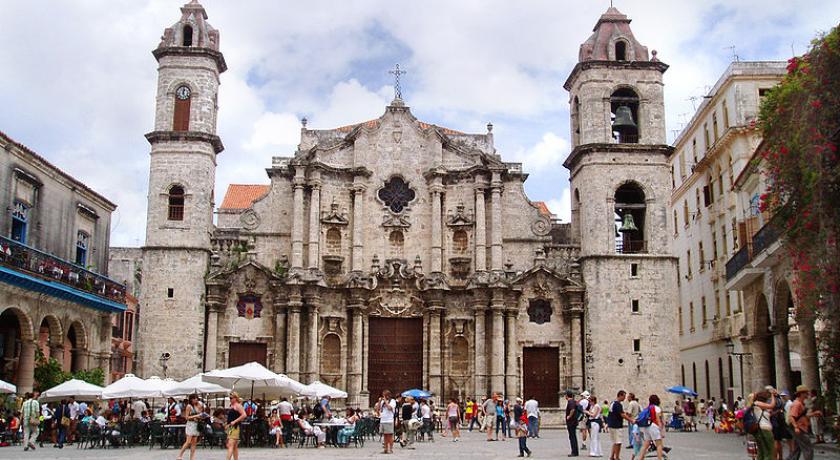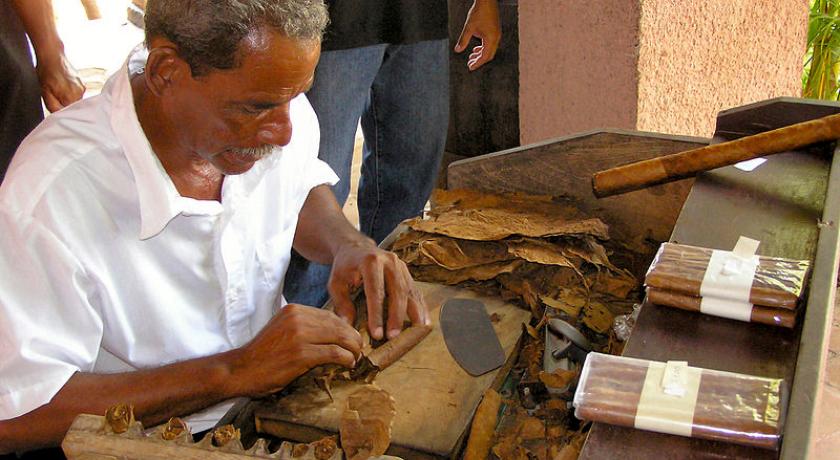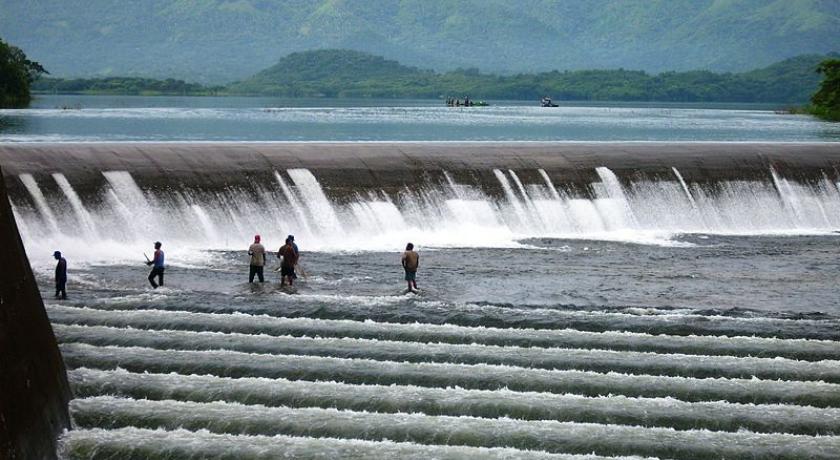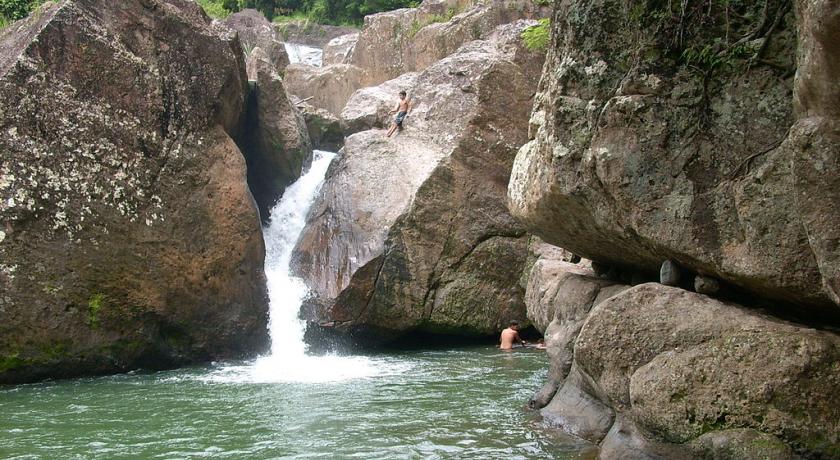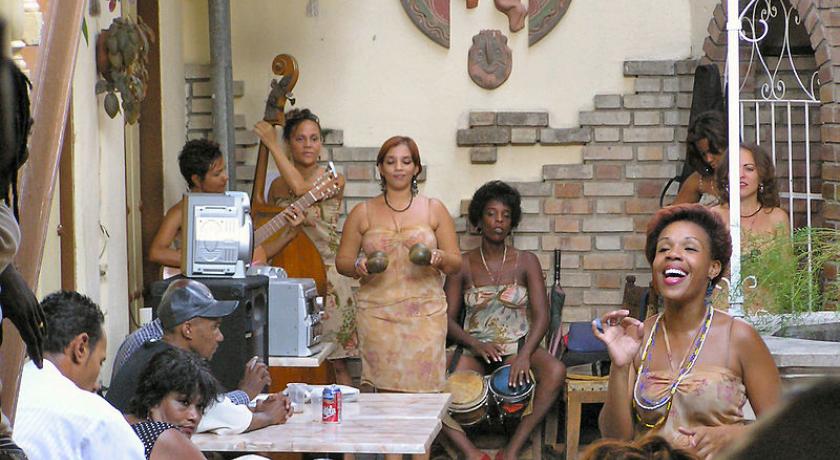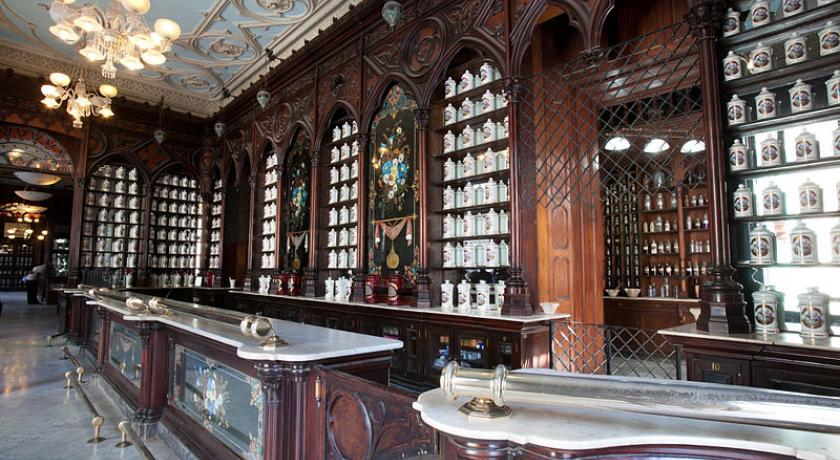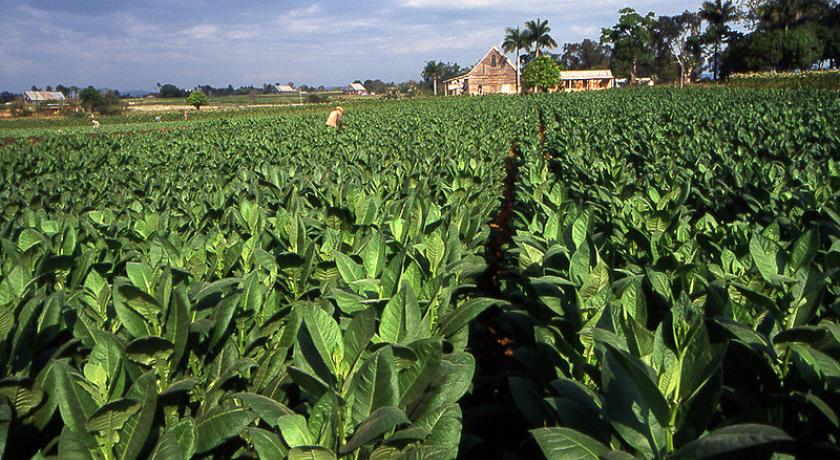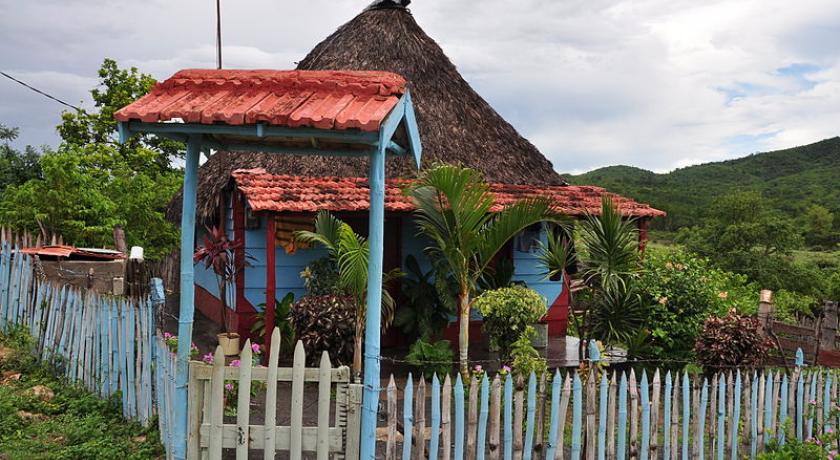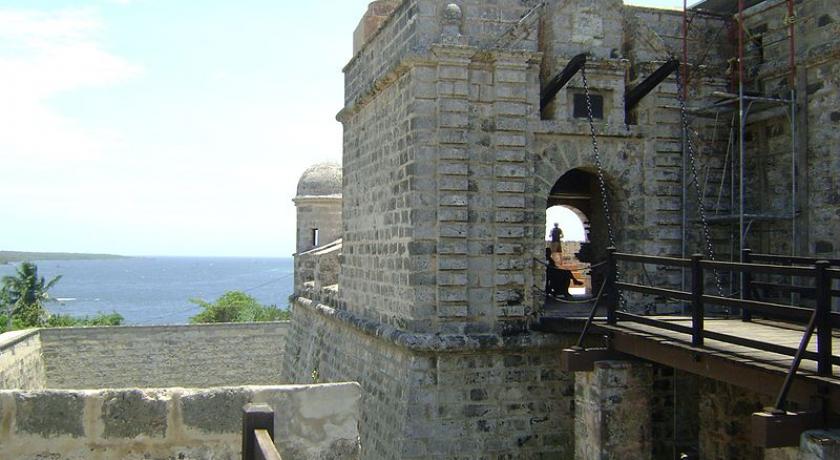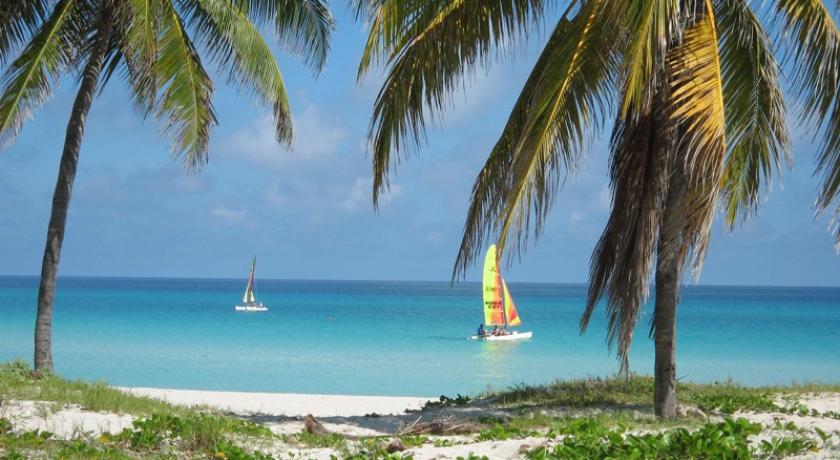Guide description
Cuba, officially the Republic of Cuba, is a country comprising the island of Cuba as well as Isla de la Juventud and several minor archipelagos. Cuba is located in the northern Caribbean where the Caribbean Sea, the Gulf of Mexico, and the Atlantic Ocean meet. It is south of both the U.S. state of Florida and the Bahamas, west of Haiti, and north of Jamaica. Havana is the largest city and capital; other major cities include Santiago de Cuba and Camagüey. Cuba is the largest island in the Caribbean, with an area of 109,884 square kilometres (42,426 sq mi), and the second-most populous after Hispaniola, with over 11 million inhabitants.
Prior to Spanish colonization in the late 15th century, Cuba was inhabited by Amerindian tribes. It remained a colony of Spain until the Spanish–American War of 1898, which led to nominal independence as a de facto United States protectorate in 1902. As a fragile republic, Cuba attempted to strengthen its democratic system, but mounting political radicalization and social strife culminated in the dictatorship of Fulgencio Batista in 1952. Further unrest and instability led to Batista's ousting in January 1959 by the July 26 Movement, which afterwards established a government under the leadership of Fidel Castro. Since 1965, the state has been governed by the Communist Party of Cuba. A point of contention during the Cold War between the Soviet Union and the United States, a nuclear war nearly broke out during the Cuban Missile Crisis of 1962.
Culturally, Cuba is considered part of Latin America. It is a multiethnic country whose people, culture and customs derive from diverse origins, including the aboriginal Taíno and Ciboney peoples, the long period of Spanish colonialism, the introduction of African slaves, and a close relationship with the Soviet Union in the Cold War.
Cuba is one of the few remaining Marxist–Leninist socialist states, where the role of the vanguard Communist Party is enshrined in the Constitution. Independent observers have accused the Cuban government of numerous human rights abuses, including arbitrary imprisonment. It is one of the world's last planned economies and its economy is dominated by the exports of sugar, tobacco, coffee and skilled labor. According to the Human Development Index, Cuba is described as a country with high human development and is ranked the eighth highest in North America. It also ranks highly in some metrics of national performance, including health care and education. Cuba is the only country in the world to receive WWF's definition of sustainable development.
Culture
Cuban culture is influenced by its melting pot of cultures, primarily those of Spain and Africa. After the 1959 revolution, the government started a national literacy campaign, offered free education to all and established rigorous sports, ballet and music programs.
Music
Cuban music is very rich and is the most commonly known expression of Cuban culture. The central form of this music is Son, which has been the basis of many other musical styles like "Danzón de nuevo ritmo", mambo, cha-cha-chá and salsa music. Rumba ("de cajón o de solar") music originated in the early Afro-Cuban culture, mixed with Hispanic elements of style. The Tres was invented in Cuba from Hispanic cordophone instruments models (the instrument is actually a fusion of elements from the Spanish guitar and lute). Other traditional Cuban instruments are of African origin, Taíno origin, or both, such as the maracas, güiro, marímbula and various wooden drums including the mayohuacán.
Popular Cuban music of all styles has been enjoyed and praised widely across the world. Cuban classical music, which includes music with strong African and European influences, and features symphonic works as well as music for soloists, has received international acclaim thanks to composers like Ernesto Lecuona. Havana was the heart of the rap scene in Cuba when it began in the 1990s.
During that time, reggaetón was growing in popularity. In 2011, the Cuban state denounced reggaeton as degenerate, directed reduced "low-profile" airplay of the genre (but did not ban it entirely) and banned the megahit Chupi Chupi by Osmani García, characterizing its description of sex as "the sort which a prostitute would carry out". In December 2012, the Cuban government officially banned sexually explicit reggaeton songs and music videos from radio and television. As well as pop, classical and rock are very popular in Cuba.
Cuisine
Cuban cuisine is a fusion of Spanish and Caribbean cuisines. Cuban recipes share spices and techniques with Spanish cooking, with some Caribbean influence in spice and flavor. Food rationing, which has been the norm in Cuba for the last four decades, restricts the common availability of these dishes. The traditional Cuban meal is not served in courses; all food items are served at the same time.
The typical meal could consist of plantains, black beans and rice, ropa vieja (shredded beef), Cuban bread, pork with onions, and tropical fruits. Black beans and rice, referred to as moros y cristianos (or moros for short), and plantains are staples of the Cuban diet. Many of the meat dishes are cooked slowly with light sauces. Garlic, cumin, oregano, and bay leaves are the dominant spices.
Tourism
Tourism was initially restricted to enclave resorts where tourists would be segregated from Cuban society, referred to as "enclave tourism" and "tourism apartheid". Contact between foreign visitors and ordinary Cubans were de facto illegal between 1992 and 1997. The rapid growth of tourism during the Special Period had widespread social and economic repercussions in Cuba, and led to speculation about the emergence of a two-tier economy.
Cuba has tripled its market share of Caribbean tourism in the last decade as a result of significant investment in tourism infrastructure, this growth rate is predicted to continue 1.9 million tourists visited Cuba in 2003, predominantly from Canada and the European Union, generating revenue of US$2.1 billion. Cuba recorded 2,688,000 international tourists in 2011, the third-highest figure in the Caribbean (behind the Dominican Republic and Puerto Rico).
The medical tourism sector caters to thousands of European, Latin American, Canadian, and American consumers every year.
Allegations of widespread sex tourism are downplayed by the Cuban Justice minister. According to a Government of Canada travel advice website, "Cuba is actively working to prevent child sex tourism, and a number of tourists, including Canadians, have been convicted of offences related to the corruption of minors aged 16 and under. Prison sentences range from 7 to 25 years."
Geography
Cuba is an archipelago of islands located in the northern Caribbean Sea at the confluence with the Gulf of Mexico and the Atlantic Ocean. It lies between latitudes 19° and 24°N, and longitudes 74° and 85°W. The United States lies 150 kilometers (93 miles) across the Straits of Florida to the north and northwest (to the closest tip of Key West, Florida), and the Bahamas 21 km (13 mi) to the north. Mexico lies 210 kilometers (130 miles) across the Yucatán Channel to the west (to the closest tip of Cabo Catoche in the State of Quintana Roo).
Haiti is 77 km (48 mi) to the east, Jamaica (140 km/87 mi) and the Cayman Islands to the south. Cuba is the principal island, surrounded by four smaller groups of islands: the Colorados Archipelago on the northwestern coast, the Sabana-Camagüey Archipelago on the north-central Atlantic coast, the Jardines de la Reina on the south-central coast and the Canarreos Archipelago on the southwestern coast.
The main island, named Cuba, is 1,250 km (780 mi) long, constituting most of the nation's land area (104,556 km2 (40,369 sq mi)) and is the largest island in the Caribbean and 17th-largest island in the world by land area. The main island consists mostly of flat to rolling plains apart from the Sierra Maestra mountains in the southeast, whose highest point is Pico Turquino (1,974 m (6,476 ft)).
The second-largest island is Isla de la Juventud (Isle of Youth) in the Canarreos archipelago, with an area of 2,200 km2 (849 sq mi). Cuba has an official area (land area) of 109,884 km2 (42,426 sq mi). Its area is 110,860 km2 (42,803 sq mi) including coastal and territorial waters.
Climate
With the entire island south of the Tropic of Cancer, the local climate is tropical, moderated by northeasterly trade winds that blow year-round. The temperature is also shaped by the Caribbean current, which brings in warm water from the equator. This makes the climate of Cuba warmer than that of Hong Kong, which is at around the same latitude as Cuba but has a subtropical rather than a tropical climate. In general (with local variations), there is a drier season from November to April, and a rainier season from May to October. The average temperature is 21 °C (69.8 °F) in January and 27 °C (80.6 °F) in July. The warm temperatures of the Caribbean Sea and the fact that Cuba sits across the entrance to the Gulf of Mexico combine to make the country prone to frequent hurricanes. These are most common in September and October.
Religion
In 2010, the religious affiliation of the country was estimated by the Pew Forum to be 65% Christian (60% Roman Catholic or about 6.9 million in 2016, 5% Protestant or about 575,000 in 2016), 23% unaffiliated, 17% folk religion (such as santería), and the remaining 0.4% consisting of other religions.
Cuba is officially a secular state. Religious freedom increased through the 1980s, with the government amending the constitution in 1992 to drop the state's characterization as atheistic.
Roman Catholicism is the largest religion, with its origins in Spanish colonization. Despite less than half of the population identifying as Catholics in 2006, it nonetheless remains the dominant faith. Pope John Paul II and Pope Benedict XVI visited Cuba in 1998 and 2011, respectively, and Pope Francis visited Cuba in September 2015. Prior to each papal visit, the Cuban government pardoned prisoners as a humanitarian gesture.
The government's relaxation of restrictions on house churches in the 1990s led to an explosion of Pentecostalism, with some groups claiming as many as 100,000 members. However, Evangelical Protestant sects, organized into the umbrella Cuban Council of Churches, remain much more powerful.
The religious landscape of Cuba is also strongly defined by syncretisms of various kinds. Christianity is often practiced in tandem with Santería, a mixture of Catholicism and mostly African faiths, which include a number of cults. La Virgen de la Caridad del Cobre (the Virgin of Cobre) is the Catholic patroness of Cuba, and a symbol of Cuban culture. In Santería, she has been syncretized with the goddess Oshun.
Cuba also hosts small communities of Jews (500 in 2012), Muslims, and members of the Bahá'í Faith.
Several well-known Cuban religious figures have operated outside the island, including the humanitarian and author Jorge Armando Pérez.
Languages
The official language of Cuba is Spanish and the vast majority of Cubans speak it. Spanish as spoken in Cuba is known as Cuban Spanish and is a form of Caribbean Spanish. Lucumí, a dialect of the West African language Yoruba, is also used as a liturgical language by practitioners of Santería, and so only as a second language. Haitian Creole is the second most spoken language in Cuba, and is spoken by Haitian immigrants and their descendants. Other languages spoken by immigrants include Galician and Corsican.
History
Independence movements
Full independence from Spain was the goal of a rebellion in 1868 led by planter Carlos Manuel de Céspedes. De Céspedes, a sugar planter, freed his slaves to fight with him for an independent Cuba. On December 27, 1868, he issued a decree condemning slavery in theory but accepting it in practice and declaring free any slaves whose masters present them for military service. The 1868 rebellion resulted in a prolonged conflict known as the Ten Years' War. Two thousand Cuban Chinese joined the rebels. Chinese had been imported as indentured laborers. A monument in Havana honours the Cuban Chinese who fell in the war.
The United States declined to recognize the new Cuban government, although many European and Latin American nations did so. In 1878, the Pact of Zanjón ended the conflict, with Spain promising greater autonomy to Cuba. In 1879–1880, Cuban patriot Calixto García attempted to start another war known as the Little War but did not receive enough support. Slavery in Cuba was abolished in 1875 but the process was completed only in 1886.
An exiled dissident named José Martí founded the Cuban Revolutionary Party in New York in 1892. The aim of the party was to achieve Cuban independence from Spain. In January 1895 Martí traveled to Montecristi and Santo Domingo to join the efforts of Máximo Gómez. Martí recorded his political views in the Manifesto of Montecristi. Fighting against the Spanish army began in Cuba on February 24, 1895, but Martí was unable to reach Cuba until April 11, 1895. Martí was killed in the battle of Dos Rios on May 19, 1895. His death immortalized him as Cuba's national hero.
Around 200,000 Spanish troops outnumbered the much smaller rebel army, which relied mostly on guerrilla and sabotage tactics. The Spaniards began a campaign of suppression. General Valeriano Weyler, military governor of Cuba, herded the rural population into what he called reconcentrados, described by international observers as "fortified towns". These are often considered the prototype for 20th-century concentration camps. Between 200,000 and 400,000 Cuban civilians died from starvation and disease in the camps, numbers verified by the Red Cross and United States Senator Redfield Proctor, a former Secretary of War. American and European protests against Spanish conduct on the island followed.
The U.S. battleship Maine was sent to protect U.S. interests, but soon after arrival, it exploded in Havana harbor and sank quickly, killing nearly three quarters of the crew. The cause and responsibility for the sinking of the ship remained unclear after a board of inquiry. Popular opinion in the U.S., fueled by an active press, concluded that the Spanish were to blame and demanded action. Spain and the United States declared war on each other in late April 1898.
Over the previous decades, five U.S. presidents—Polk, Pierce, Buchanan, Grant, and McKinley—had tried to buy the island of Cuba from Spain.
Independence (1902–59)
After the Spanish–American War, Spain and the United States signed the Treaty of Paris (1898), by which Spain ceded Puerto Rico, the Philippines, and Guam to the United States for the sum of US$20 million. Cuba gained formal independence from the U.S. on May 20, 1902, as the Republic of Cuba. Under Cuba's new constitution, the U.S. retained the right to intervene in Cuban affairs and to supervise its finances and foreign relations. Under the Platt Amendment, the U.S. leased the Guantánamo Bay naval base from Cuba.
Following disputed elections in 1906, the first president, Tomás Estrada Palma, faced an armed revolt by independence war veterans who defeated the meager government forces. The U.S. intervened by occupying Cuba and named Charles Edward Magoon as Governor for three years. Cuban historians have characterized Magoon's governorship as having introduced political and social corruption. In 1908, self-government was restored when José Miguel Gómez was elected President, but the U.S. continued intervening in Cuban affairs. In 1912, the Partido Independiente de Color attempted to establish a separate black republic in Oriente Province, but was suppressed by General Monteagudo with considerable bloodshed.
In 1924, Gerardo Machado was elected president. During his administration, tourism increased markedly, and American-owned hotels and restaurants were built to accommodate the influx of tourists. The tourist boom led to increases in gambling and prostitution. The Wall Street Crash of 1929 led to a collapse in the price of sugar, political unrest, and repression. Protesting students, known as the Generation of 1930, turned to violence in opposition to the increasingly unpopular Machado. A general strike (in which the Communist Party sided with Machado), uprisings among sugar workers, and an army revolt forced Machado into exile in August 1933. He was replaced by Carlos Manuel de Céspedes y Quesada.
In September 1933, the Sergeants' Revolt, led by Sergeant Fulgencio Batista, overthrew Cespedes. A five-member executive committee (the Pentarchy of 1933) was chosen to head a provisional government. Ramón Grau San Martín was then appointed as provisional president. Grau resigned in 1934, leaving the way clear for Batista, who dominated Cuban politics for the next 25 years, at first through a series of puppet-presidents. The period from 1933 to 1937 was a time of "virtually unremitting social and political warfare".
A new constitution was adopted in 1940, which engineered radical progressive ideas, including the right to labour and health care. Batista was elected president in the same year, holding the post until 1944. He is so far the only non-white Cuban to win the nation's highest political office. His government carried out major social reforms. Several members of the Communist Party held office under his administration. Cuban armed forces were not greatly involved in combat during World War II, although president Batista suggested a joint U.S.-Latin American assault on Francoist Spain in order to overthrow its authoritarian regime.
Batista adhered to the 1940 constitution's strictures preventing his re-election. Ramon Grau San Martin was the winner of the next election, in 1944. Grau further corroded the base of the already teetering legitimacy of the Cuban political system, in particular by undermining the deeply flawed, though not entirely ineffectual, Congress and Supreme Court. Carlos Prío Socarrás, a protégé of Grau, became president in 1948. The two terms of the Auténtico Party saw an influx of investment which fueled a boom and raised living standards for all segments of society and created a prosperous middle class in most urban areas.
After running unsuccessfully for the presidency in 1952, Batista staged a coup. He outlawed the Cuban Communist Party in 1952. After the coup, Cuba had Latin America's highest per capita consumption rates of meat, vegetables, cereals, automobiles, telephones and radios, though about one third of the population was considered poor and enjoyed relatively little of this consumption.
In 1958, Cuba was a relatively well-advanced country by Latin American standards, and in some cases by world standards. On the other hand, Cuba was affected by perhaps the largest labor union privileges in Latin America, including bans on dismissals and mechanization. They were obtained in large measure "at the cost of the unemployed and the peasants", leading to disparities. Between 1933 and 1958, Cuba extended economic regulations enormously, causing economic problems. Unemployment became a problem as graduates entering the workforce could not find jobs. The middle class, which was comparable to that of the United States, became increasingly dissatisfied with unemployment and political persecution. The labor unions supported Batista until the very end. Batista stayed in power until he was forced into exile in December 1958.
Revolution and Communist party rule (1959–present)
In the 1950s, various organizations, including some advocating armed uprising, competed for public support in bringing about political change. In 1956, Fidel Castro and about 80 supporters landed from the yacht Granma in an attempt to start a rebellion against the Batista government. It was not until 1958 that Castro's July 26th Movement emerged as the leading revolutionary group.
By late 1958 the rebels had broken out of the Sierra Maestra and launched a general popular insurrection. After Castro's fighters captured Santa Clara, Batista fled with his family to the Dominican Republic on January 1, 1959. Later he went into exile on the Portuguese island of Madeira and finally settled in Estoril, near Lisbon. Fidel Castro's forces entered the capital on January 8, 1959. The liberal Manuel Urrutia Lleó became the provisional president.
From 1959 to 1966 Cuban insurgents fought a six-year rebellion in the Escambray Mountains against the Castro government. The government's vastly superior numbers eventually crushed the insurgency. The rebellion lasted longer and involved more soldiers than the Cuban Revolution. The U.S. State Department has estimated that 3,200 people were executed from 1959 to 1962. According to Amnesty International, death sentences from 1959–87 numbered 237 of which all but 21 were actually carried out. Other estimates for the total number of political executions range from 4,000 to 33,000. The vast majority of those executed following the 1959 revolution were policemen, politicians, and informers of the Batista regime accused of crimes such as torture and murder, and their public trials and executions had widespread popular support among the Cuban population.
The United States government initially reacted favorably to the Cuban revolution, seeing it as part of a movement to bring democracy to Latin America. Castro's legalization of the Communist party and the hundreds of executions that followed caused a deterioration in the relationship between the two countries. The promulgation of the Agrarian Reform Law, expropriating thousands of acres of farmland (including from large U.S. landholders), further worsened relations. In response, between 1960 and 1964 the U.S imposed a range of sanctions, eventually including a total ban on trade between the countries and a freeze on all Cuban-owned assets in the U.S. In February 1960, Castro signed a commercial agreement with Soviet Vice-Premier Anastas Mikoyan.
In March 1960, Eisenhower gave his approval to a CIA plan to arm and train a group of Cuban refugees to overthrow the Castro regime. The invasion (known as the Bay of Pigs Invasion) took place on April 14, 1961. About 1,400 Cuban exiles disembarked at the Bay of Pigs, but failed in their attempt to overthrow Castro.
In January 1962, Cuba was suspended from the Organization of American States (OAS), and later the same year the OAS started to impose sanctions against Cuba of similar nature to the US sanctions. The Cuban Missile Crisis occurred in October 1962. By 1963, Cuba was moving towards a full-fledged Communist system modeled on the USSR.
During the 1970s, Fidel Castro dispatched tens of thousands of troops in support of Soviet-supported wars in Africa. He supported the MPLA in Angola and Mengistu Haile Mariam in Ethiopia.
The standard of living in the 1970s was "extremely spartan" and discontent was rife. Fidel Castro admitted the failures of economic policies in a 1970 speech. In 1975 the OAS lifted its sanctions against Cuba, with the approval of 16 member states, including the U.S. The U.S., however, maintained its own sanctions.
Castro's rule was severely tested in the aftermath of the Soviet collapse in 1991 (known in Cuba as the Special Period). The country faced a severe economic downturn following the withdrawal of Soviet subsidies worth $4 billion to $6 billion annually, resulting in effects such as food and fuel shortages. The government did not accept American donations of food, medicines, and cash until 1993. On August 5, 1994, state security dispersed protesters in a spontaneous protest in Havana.
Cuba has since found a new source of aid and support in the People's Republic of China. In addition, Hugo Chávez, former President of Venezuela, and Evo Morales, President of Bolivia, became allies and both countries are major oil and gas exporters. In 2003, the government arrested and imprisoned a large number of civil activists, a period known as the "Black Spring".
In February 2008, Fidel Castro announced his resignation as President of Cuba. On February 24 his brother, Raúl Castro, was declared the new President. In his inauguration speech, Raúl promised that some of the restrictions on freedom in Cuba would be removed. In March 2009, Raúl Castro removed some of his brother's appointees.
On June 3, 2009, the Organization of American States adopted a resolution to end the 47-year ban on Cuban membership of the group. The resolution stated, however, that full membership would be delayed until Cuba was "in conformity with the practices, purposes, and principles of the OAS". Fidel Castro restated his position that he was not interested in joining after the OAS resolution had been announced.
Effective January 14, 2013, Cuba ended the requirement established in 1961, that any citizens who wish to travel abroad were required to obtain an expensive government permit and a letter of invitation. In 1961 the Cuban government had imposed broad restrictions on travel to prevent the mass emigration of people after the 1959 revolution; it approved exit visas only on rare occasions. Requirements were simplified: Cubans need only a passport and a national ID card to leave; and they are allowed to take their young children with them for the first time. However, a passport costs on average five months' salary. Observers expect that Cubans with paying relatives abroad are most likely to be able to take advantage of the new policy. In the first year of the program, over 180,000 left Cuba and returned.
As of December 2014, talks with Cuban officials and American officials including President Barack Obama have resulted in the exchange of releasing Alan Gross, fifty-two political prisoners, and an unnamed non-citizen agent of the United States in return for the release of three Cuban agents currently imprisoned in the United States. Additionally, while the embargo between the United States and Cuba will not be immediately lifted, it will be relaxed to allow import, export, and certain commerce within a limit between the two.
source https://en.wikipedia.org/wiki/Cuba
Access price
Supplement per child : €0 (฿0) (maximum of 0 childs)


